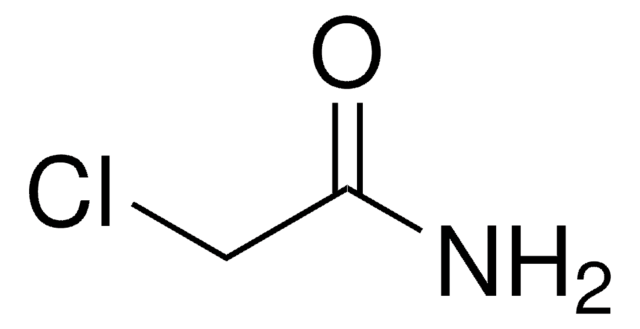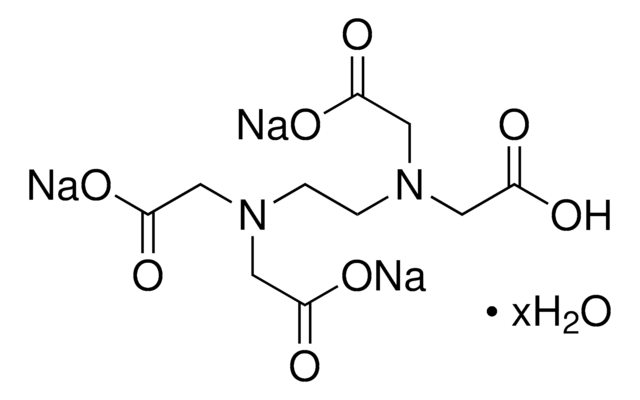C0267
2-Chloracetamid
≥98%
Synonym(e):
Chloracetamide, alpha-Chloroacetamide
About This Item
Empfohlene Produkte
Dampfdruck
0.05 mmHg ( 20 °C)
Qualitätsniveau
Assay
≥98%
Form
powder
mp (Schmelzpunkt)
116-118 °C (lit.)
SMILES String
NC(=O)CCl
InChI
1S/C2H4ClNO/c3-1-2(4)5/h1H2,(H2,4,5)
InChIKey
VXIVSQZSERGHQP-UHFFFAOYSA-N
Suchen Sie nach ähnlichen Produkten? Aufrufen Leitfaden zum Produktvergleich
Verwandte Kategorien
Anwendung
- 2-Amino-4-chloroquinolines via o-alkylation of 4-chloro-1H-quinolin-2-ones and subsequent Smiles rearrangement.
- 2-(Formylaryloxy)acetamides by reacting with hydroxybenzaldehydes in the presence of potassium carbonate as a base.
- Biarylamine derivatives via aluminum triflate-catalyzed direct amination of benzhydrols.
Signalwort
Danger
H-Sätze
Gefahreneinstufungen
Acute Tox. 3 Oral - Repr. 2 - Skin Sens. 1
Lagerklassenschlüssel
6.1C - Combustible acute toxic Cat.3 / toxic compounds or compounds which causing chronic effects
WGK
WGK 2
Flammpunkt (°F)
338.0 °F
Flammpunkt (°C)
170 °C
Persönliche Schutzausrüstung
Eyeshields, Faceshields, Gloves, type P3 (EN 143) respirator cartridges
Hier finden Sie alle aktuellen Versionen:
Besitzen Sie dieses Produkt bereits?
In der Dokumentenbibliothek finden Sie die Dokumentation zu den Produkten, die Sie kürzlich erworben haben.
Kunden haben sich ebenfalls angesehen
Artikel
In this study, we developed a rapid trypsin digest kit that, at elevated temperatures, yielded reliable, reproducible results in less than 2 hours on a wide variety of substrates for mass spectrometry.
Unser Team von Wissenschaftlern verfügt über Erfahrung in allen Forschungsbereichen einschließlich Life Science, Materialwissenschaften, chemischer Synthese, Chromatographie, Analytik und vielen mehr..
Setzen Sie sich mit dem technischen Dienst in Verbindung.














